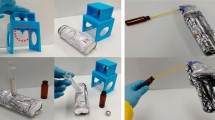Abstract.
The toxicological significance of exposure of members of the public to spray drift odors of four herbicide formulations (three 2,4-dichlorophenoxyacetic [2,4-D] acid derivatives and one MCPA [4-methyl-2-chlorophenoxyacetic acid] derivative) has been studied using a combination of novel odor measurement and classic residue analysis techniques. The mean odor concentrations, generated during the spraying of the commercial herbicide formulations under simulated aerial application conditions, were about twofold higher for 2,4-D ethylhexyl ester (22,500 OUc/m3) and MCPA (30,100 OUc/m3) than for 2,4-D butyl ester (12,400 OUc/m3) and 2,4-D amine (11,800 OUc/m3). Detailed investigations determined that the odors are due to trace manufacturing impurities and additives in the commercial formulations, whereas the herbicide active ingredients are odorless. Measured airborne herbicide active ingredient concentrations under the simulated aerial application conditions were all below their respective occupational safety and health TLV-TWA values, indicating that exposures of toxicological significance as a result of spray drift are unlikely.
Similar content being viewed by others
Author information
Authors and Affiliations
Additional information
Received: 27 March 1999/Accepted: 24 September 1999
Rights and permissions
About this article
Cite this article
Brown, J., Gooneratne, S. & Chapman, R. Herbicide Spray Drift Odor: Measurement and Toxicological Significance. Arch. Environ. Contam. Toxicol. 38, 390–397 (2000). https://doi.org/10.1007/s002449910052
Issue Date:
DOI: https://doi.org/10.1007/s002449910052




